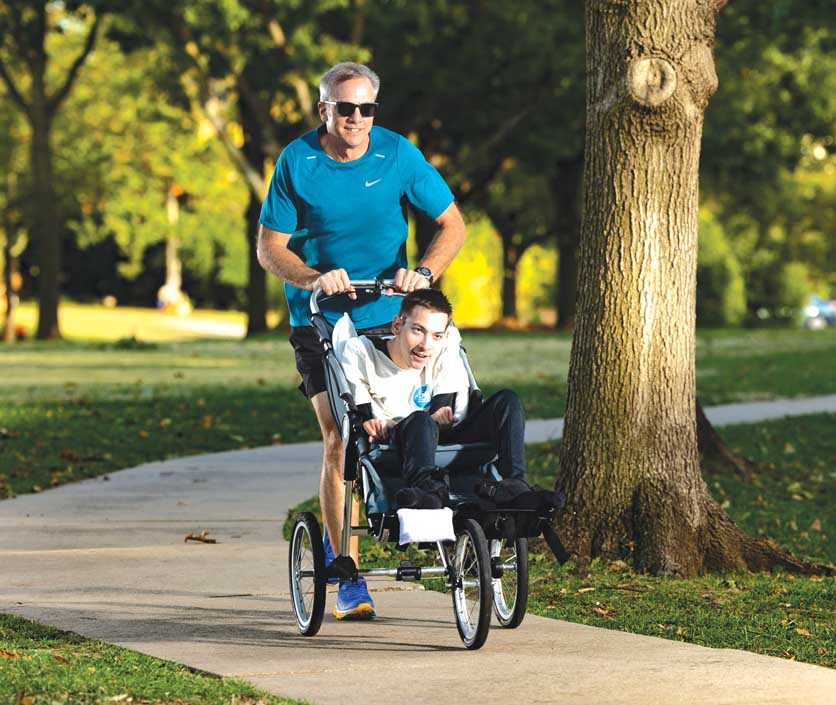

Scientists’ passion lies in the possibility of discovering what is unknown. Sometimes, as in the case of Oklahoma Medical Research Foundation President Andrew S. Weyrich, Ph.D., it becomes more personal.
Weyrich’s son, Sam, was born with a leukodystrophy, a rare disease characterized by decreased motor function, muscle rigidity and eventual deterioration of sight and hearing. Leukodystrophies are estimated to affect 1 in 7,000 live births. The condition is fatal, with no cure and limited treatment options.
“Medical research always excited me,” Weyrich said. “But when Sam was born, it transformed an intellectual pursuit into something deeper, more meaningful.”
Sam’s doctors told Weyrich and his wife, Amy, that their son likely wouldn’t live beyond age 2. “That was 21 years ago,” Weyrich said. “Today, against all odds, Sam has grown up.”
Feb. 28 marks Rare Disease Day, a time to recognize the 300 million people worldwide living with a rare condition. In the U.S., a rare disease is defined as one that affects fewer than 200,000 people. As many as 7,000 such diseases may affect some 25 million to 30 million Americans. (story continues below)
At OMRF, scientists are looking for answers for many of these people. In some cases, Weyrich said, they were drawn to a particular disease early in their career. “But in others, researchers use their expertise to zero in on a certain biological phenomenon – like a change in a specific gene – and then follow the science where it leads them.”
For OMRF scientists Patrick Gaffney, M.D., and Lijun Xia, M.D., Ph.D., that’s precisely what happened. A pediatric geneticist at OU Health presented the pair with the case of Sydney Rutz, a then-6-year-old from Yukon, Oklahoma, with growth deficiencies, skeletal anomalies and cataracts. After three years of study, they identified a previously unknown genetic mutation had caused Sydney’s condition.
Xia is now pursuing potential therapies and hopes for an outcome like that of Rod McEver, M.D., OMRF’s vice president of research. McEver’s work led to Adakveo, the first FDA-approved treatment for the pain crises that strike people with sickle cell disease, a condition that affects an estimated 100,000 Americans.
“So, while individual diseases may be rare,” said Weyrich, “people living with rare diseases are anything but.” He added that it’s important to recognize the millions of people like Sam not just on Rare Disease Day, but every day.
“They enrich our world and our lives in countless ways,” Weyrich said. “Even now, he keeps me pushing ahead. Because what we learn in the lab today may one day help the next generation of Sams.”








